B-2 Spirit — America’s Stealth Bomber
May 20th, 2023
10 minute read
Designed to slip through Soviet air defenses to deliver conventional and nuclear munitions, the Northrop Grumman B-2 Spirit may have been the peak of Cold War aviation innovation. Peter Suciu takes a look at this strategic bomber that could use low-observable technologies with high aerodynamic efficiency to penetrate Russian airspace. With its stealth technology, it greatly enhanced the third leg of America’s nuclear triad. While the B-2 Stealth Bomber never had to do the unthinkable, its presence as a nuclear deterrent helped to preserve the peace.
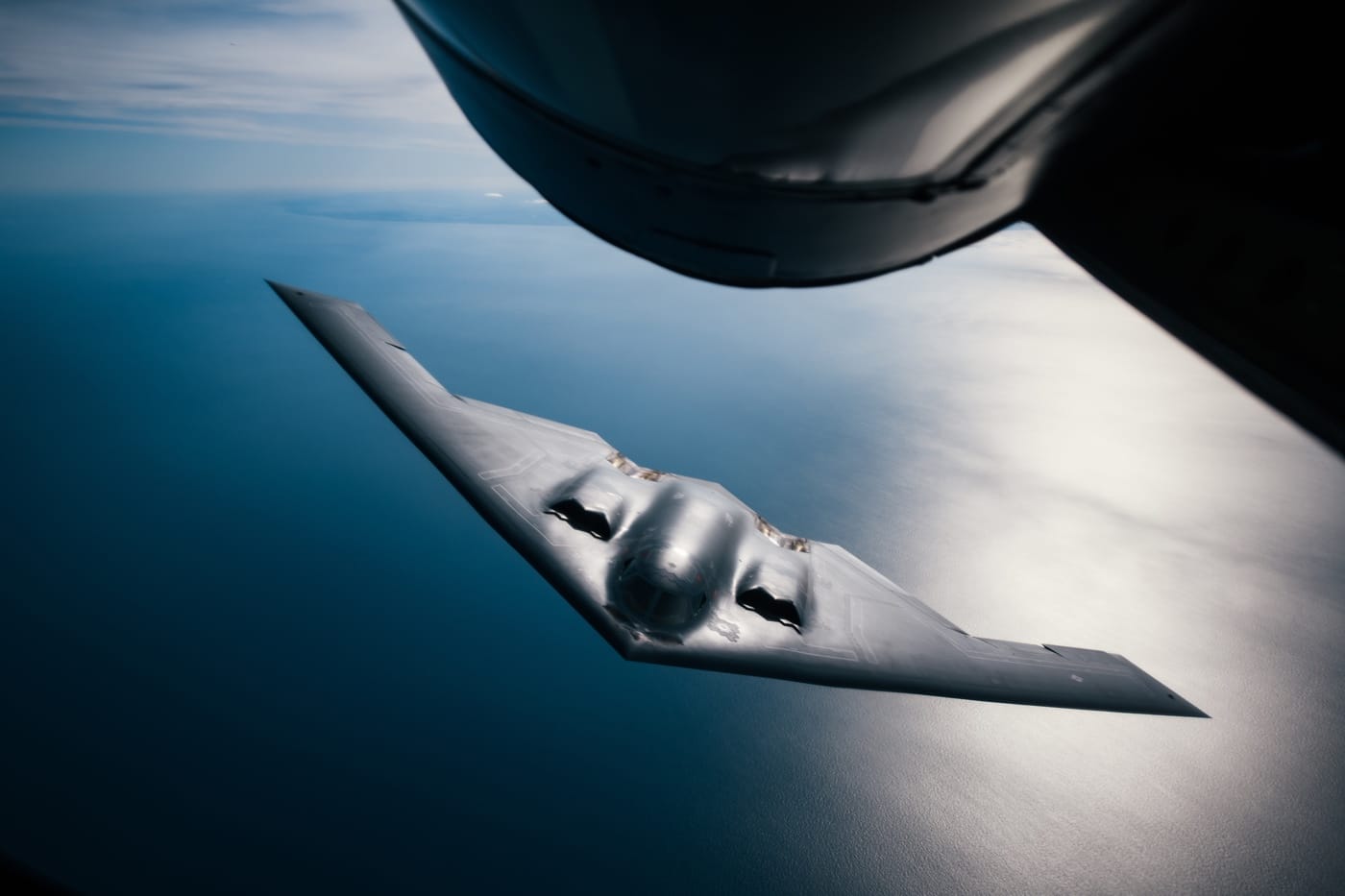
When Raiders of the Lost Ark came out in 1981, some viewers were as taken by the fictional German “flying wing” military aircraft seen in one scene as by the story of a lost biblical treasure. It wasn’t a real plane of course and was created by the film’s production designer Norman Reynolds — based on the experimental Horten Ho 229, which German designers did develop almost a decade after the film’s 1936 setting. The fictional aircraft was reportedly included in the film as director Steven Spielberg simply liked the idea of a flying wing.

That presented a few problems for the production team.
The flying wing prop was built and painted in the UK, but then had to be disassembled to be sent to the Tunis location. As if that didn’t make it difficult enough, the plane couldn’t fly there. In fact, many aviation experts have suggested that based solely on the appearance of the aircraft in the film, it wasn’t likely airworthy.
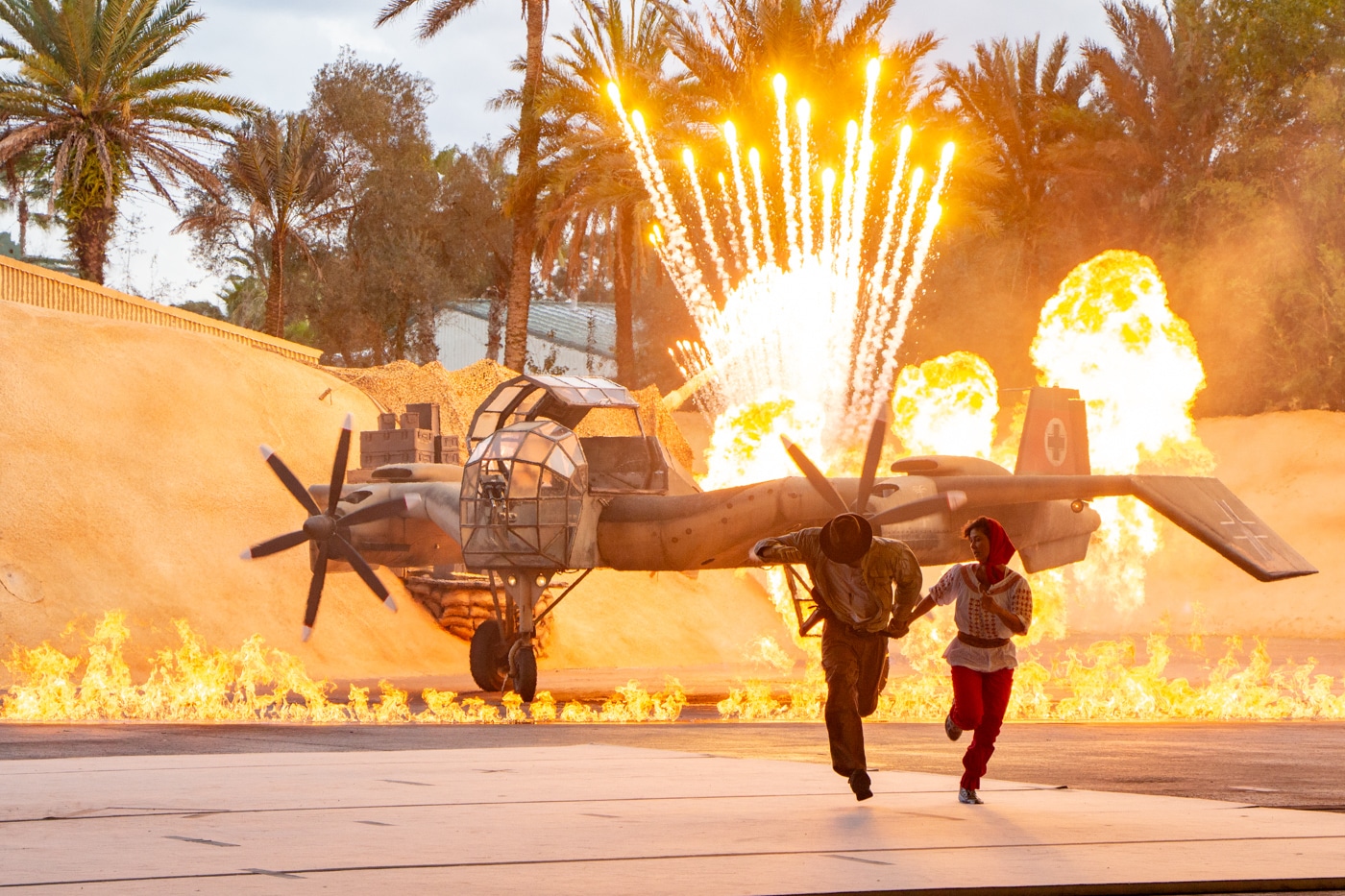
In fact, however, the Nazis and the Americans alike experimented with such aircraft. That included the propeller-powered Northrop YB-35 prototype bomber built during the Second World War, which was converted to jet-power as the YB-49 in the late 1940s.
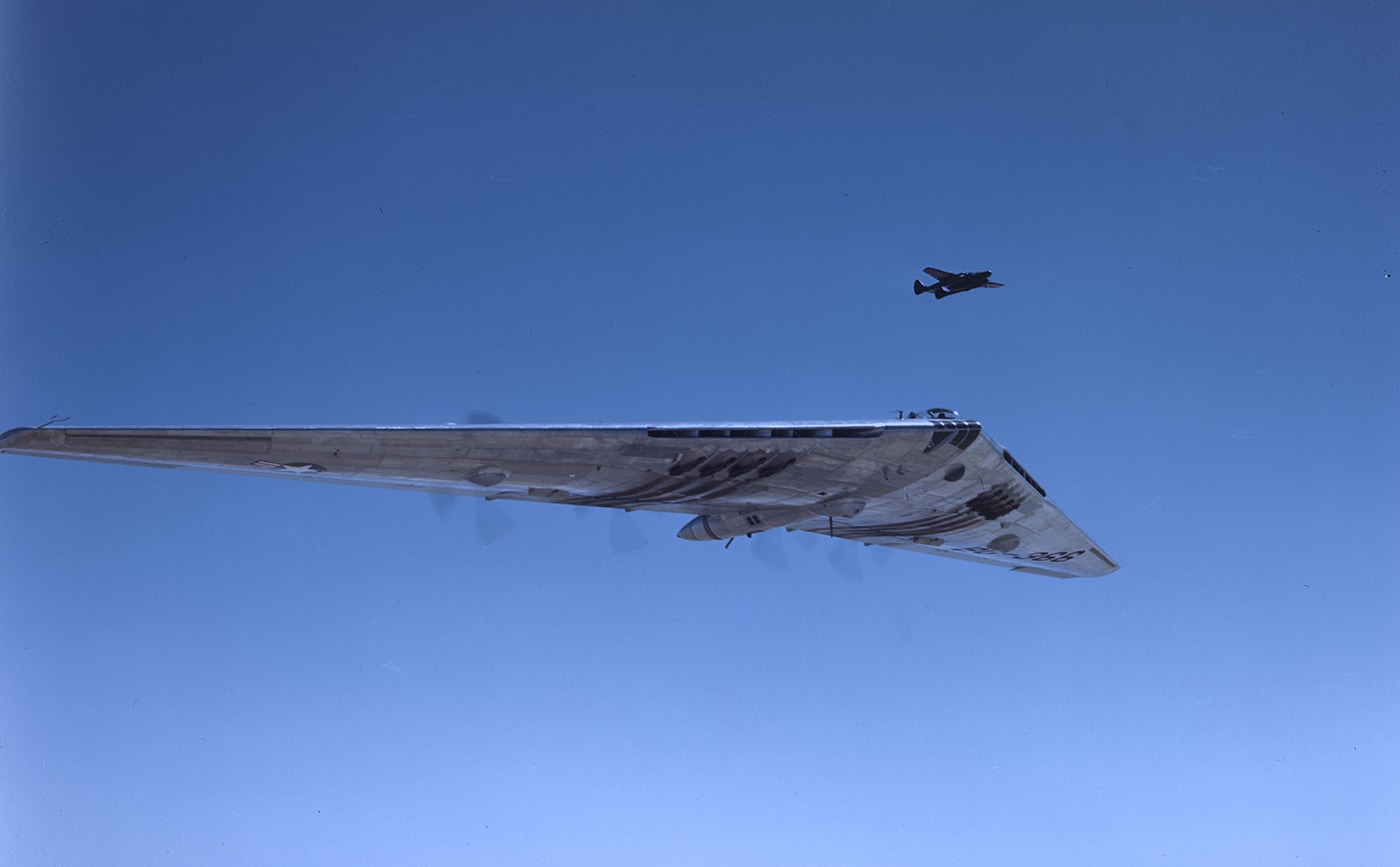
The concept proved to be way ahead of its time, however.
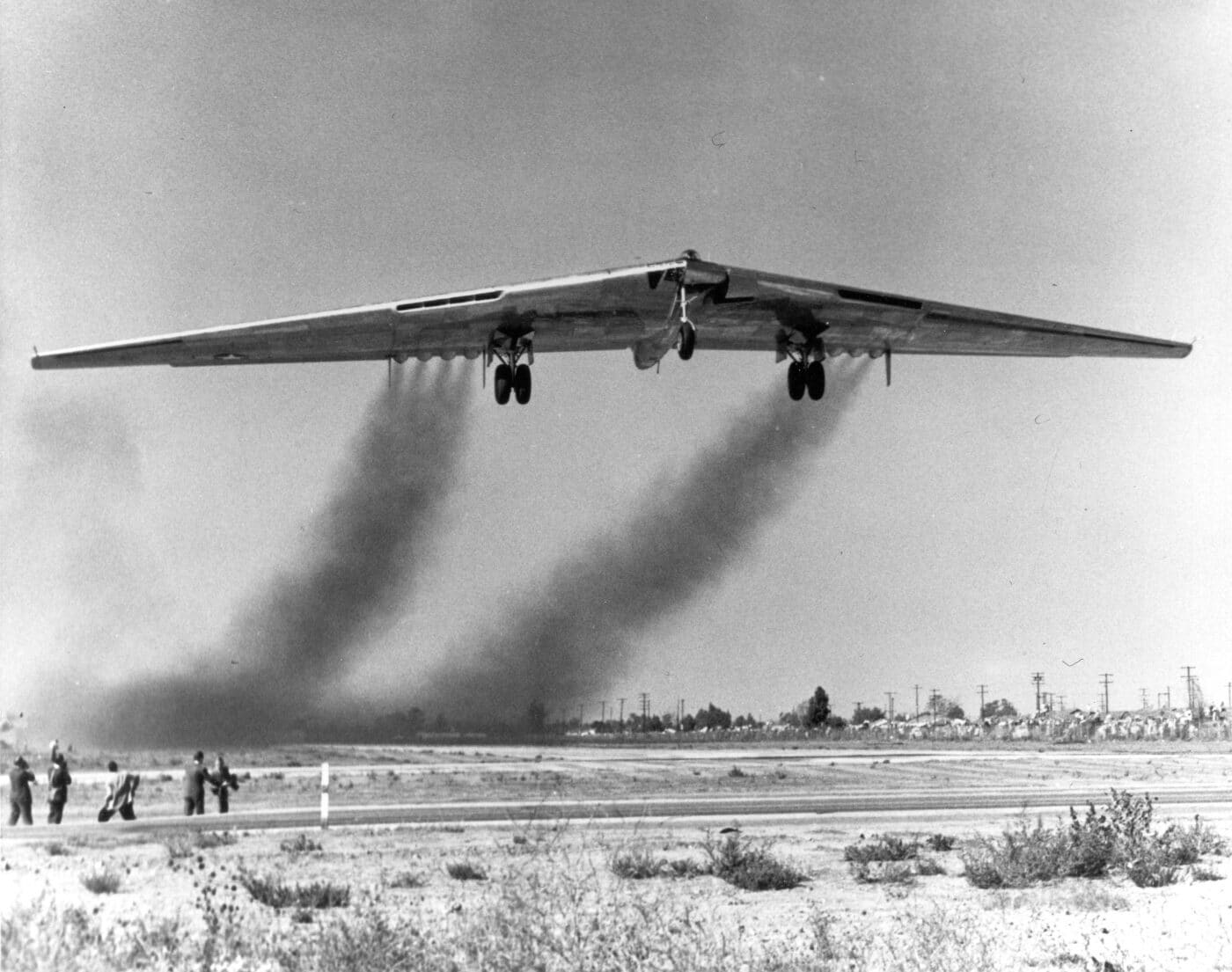
By the 1970s, a new flying wing aircraft was in development — a fact that neither Spielberg nor the movie-going audience could have known when the fictional aircraft made its appearance. Yet, just seven years later, the first B-2 was officially unveiled to the world.
One Expensive Warbird
A forgotten part of the story is that when President Jimmy Carter initially canceled the Rockwell B-1 Lancer program in favor of keeping the Boeing B-52 Stratofortress flying, it wasn’t as short-sighted as his critics might have suggested. Carter knew the Spirit was being developed.
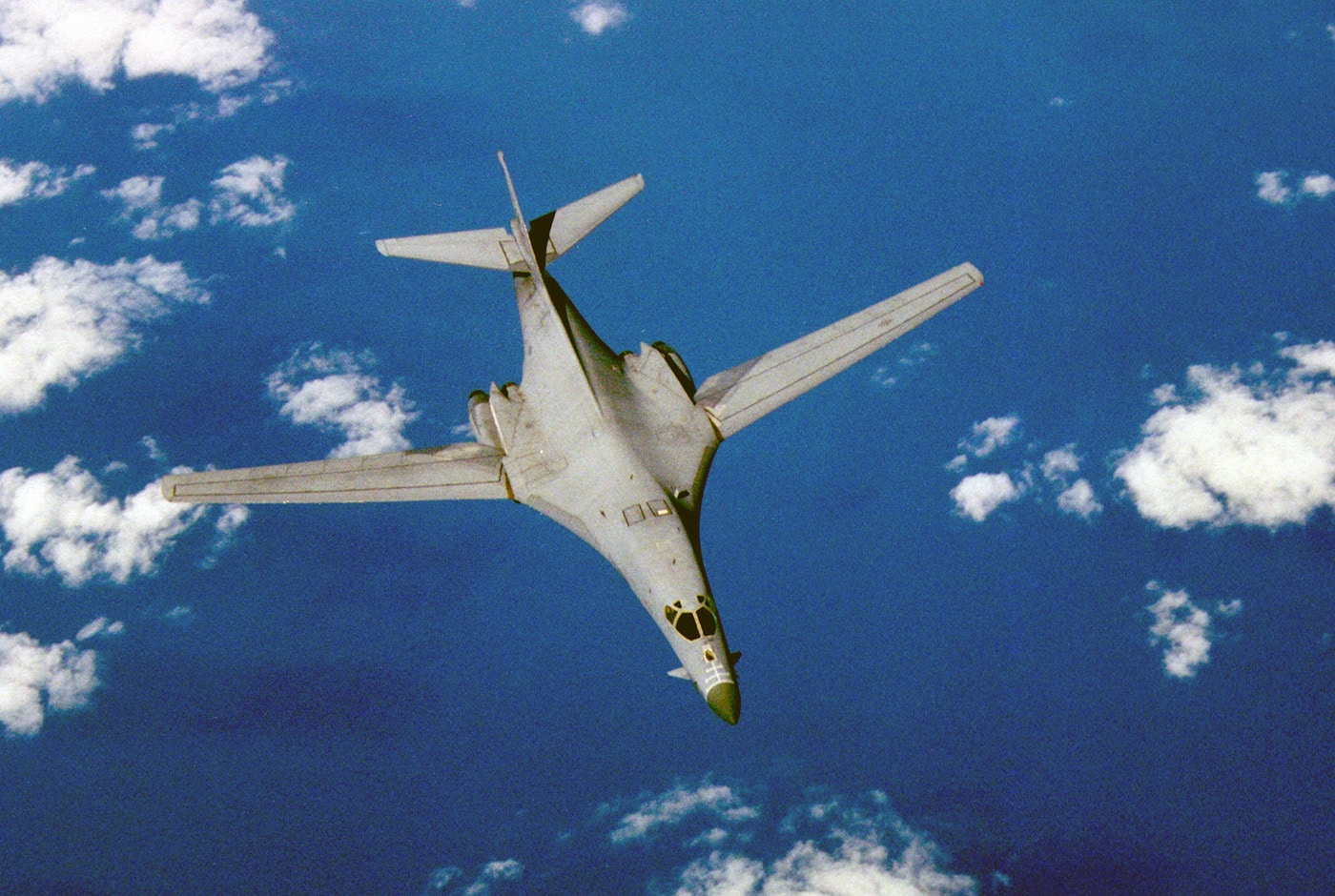
In the end, the B-1 still proved to be a bomber needed by the U.S. Air Force, which explains why it is still in service today. However, the B-2 Spirit should be seen as a great leap forward in military aviation — even if the concept dated back to the Second World War.
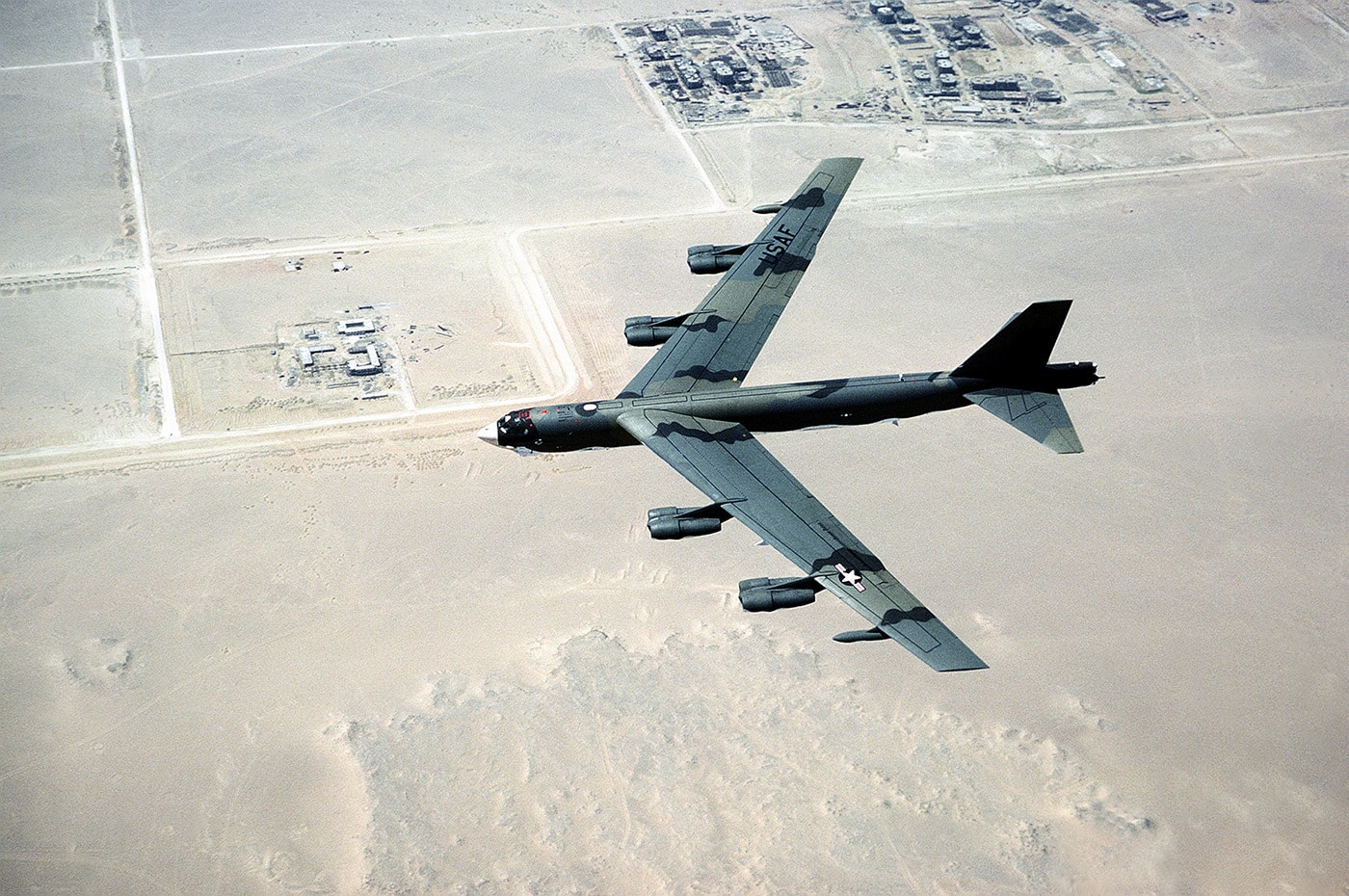
The bat-winged B-2 Spirit is a multi-role bomber that has the distinction of being the most expensive warplane ever built, with a price tag of around $929 million per aircraft. It also proved tricky to maintain and expensive to operate, which helps explain why the order was cut short to just 21 aircraft, down from the planned 131. The end of the Cold War was, of course, the mitigating factor. The bomber had been designed for a war against the Soviet Union, but with its dissolution in 1991 there simply wasn’t the need for the B-2.
Origins and Unveiling
The B-2 Spirit had remained a secret throughout most of the 1980s, and was only revealed to the public when it rolled out of its hanger at Air Force Plant 42 in Palmdale, California — and it made its first flight in July of the following year.
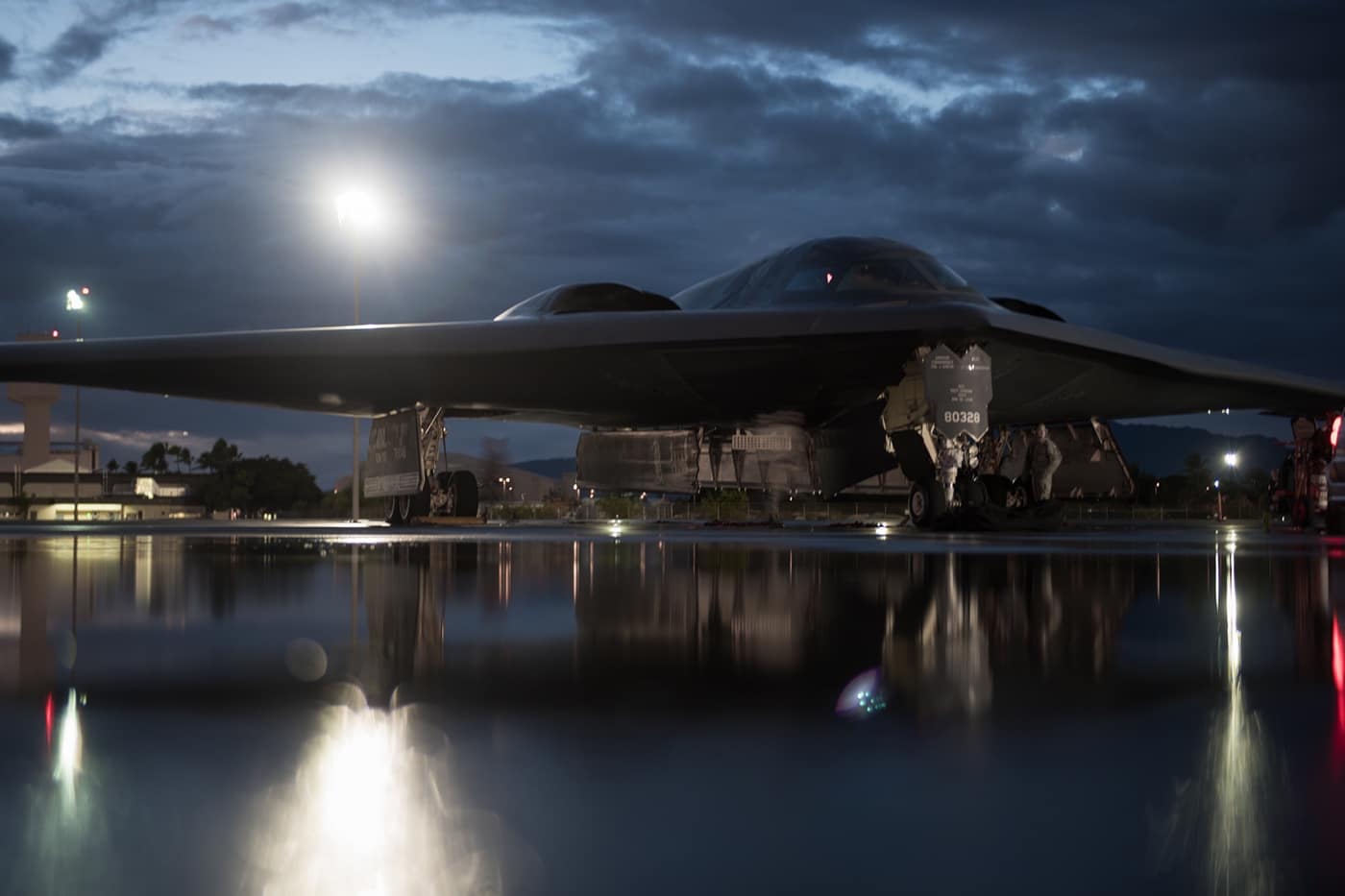
The prime contractor for the Air Force’s largely secret “Advanced Technology Bomber” (ATB) program had been Northrop (now Northrop Grumman), which was responsible for its overall system design and integration. However, reflecting the complex and ground-breaking nature of the program, a number of other contractors were involved in its development. That included Boeing Military Airplanes, Hughes Radar Systems, General Electric Aircraft Engine, and Vought Aircraft.
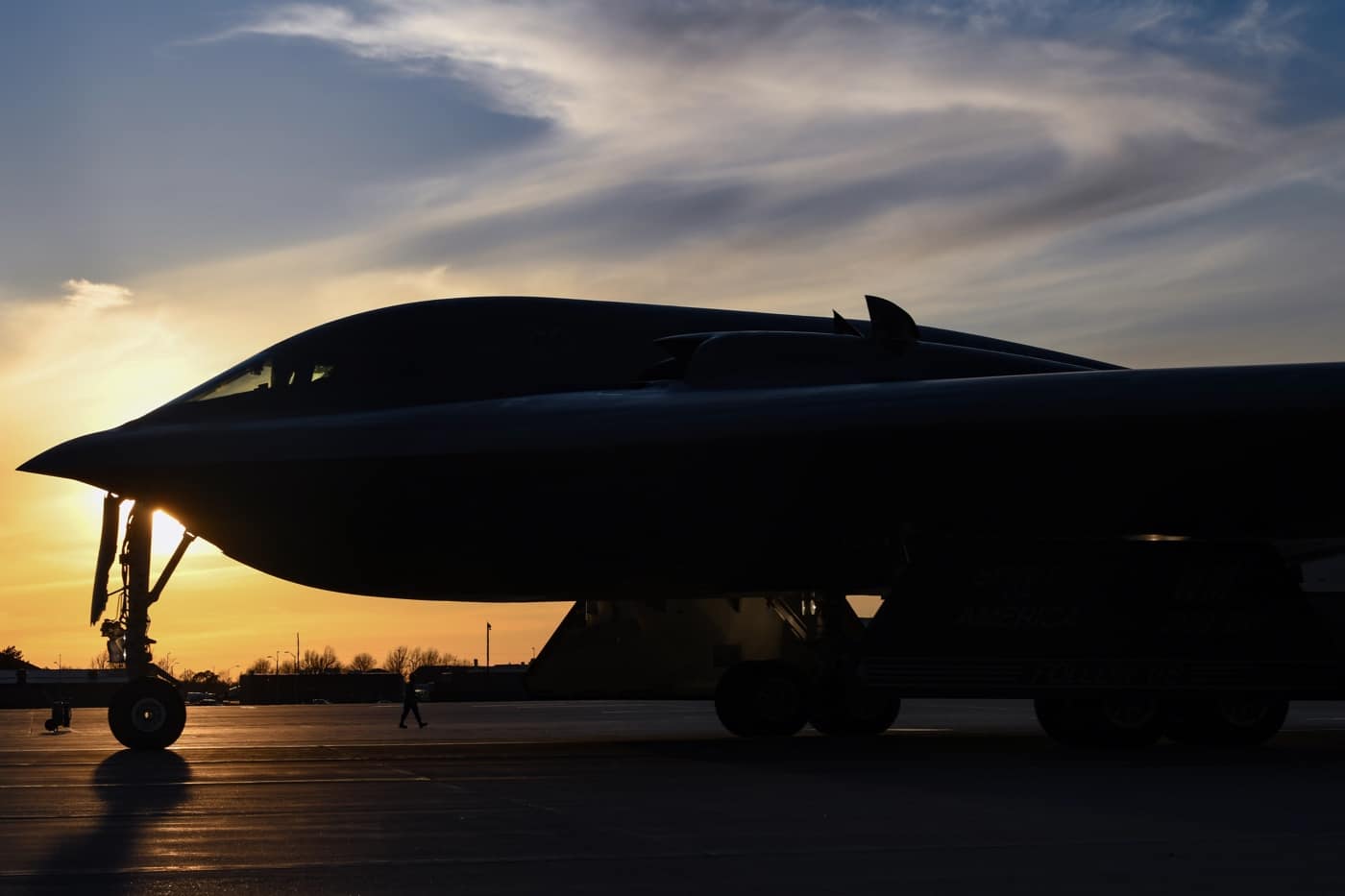
The goal of the program was to create a low-observable bomber that was capable of attacking Soviet strategic targets, including mobile intercontinental ballistic missile (ICBM) launchers. Its unique wing appearance was the result of the combined demands of stealth, long unrefueled range, and a considerable weapons load. However, while the shape offered excellent aerodynamic efficiency and provided for a large payload, it also resulted in an aircraft that was a challenge for most pilots to fly. It required a quadruplex-redundant digital fly-by-wire system.
We should remember all of this was created in the era of disco balls, and when VHS was still “cutting edge.”
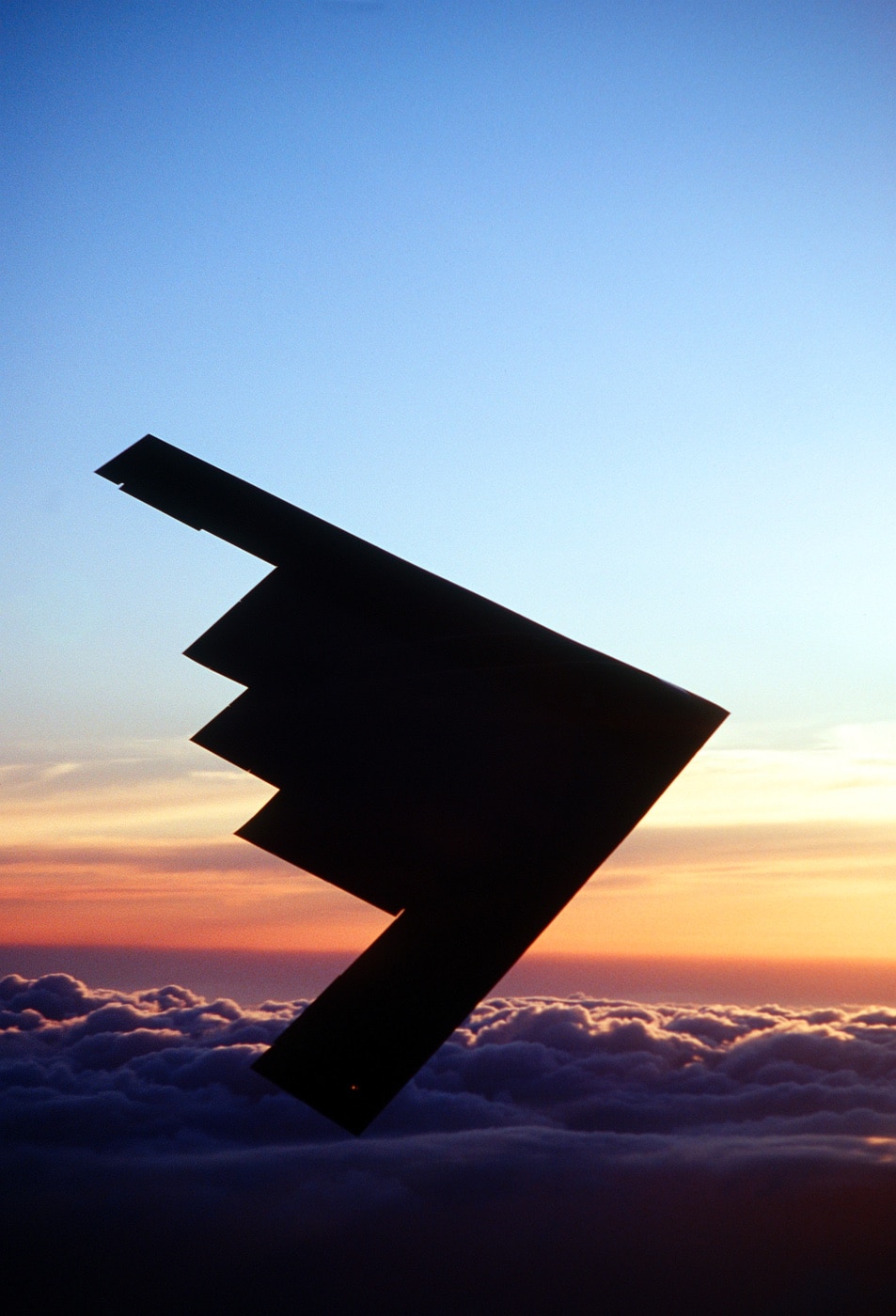
The B-2’s stealth was also derived from a combination of reduced infrared, acoustic, electromagnetic, visual, and radar signatures. Even today, many aspects of the aircraft’s low-observability process remain classified. However, it is known that the aircraft makes extensive use of composite materials and special coating of radar-absorbent materials, which contribute greatly to the maintenance costs as well as the man-hours required with keeping the fleet serviceable.
Though it has no conventional fuselage, the B-2 offers the same payload as conventional aircraft yet weighs less and uses less fuel. The leading edge of the wing planform is swept at 33 degrees, while the trailing edge is noted for its unusual saw-tooth configuration that was designed to trap radar energy. The B-2 is powered by four General Electric F-118-GE-110 turbofans that exhaust through V-shaped outlets that are set back and above the trailing edges to shield them from ground-based sensors. The engine intakes also feature S-shaped curves.
Long Haul
What is notable about the B-2 Spirit is that during most of its combat operations, the aircraft flew out of Whiteman Air Force Base in Missouri. In 1999, in its first combat missions during Operation Allied Force over the former Yugoslavia during which the Spirits were responsible for destroying 33 percent of all Serbian targets in the first eight weeks, those missions were flown non-stop to Kosovo and back.
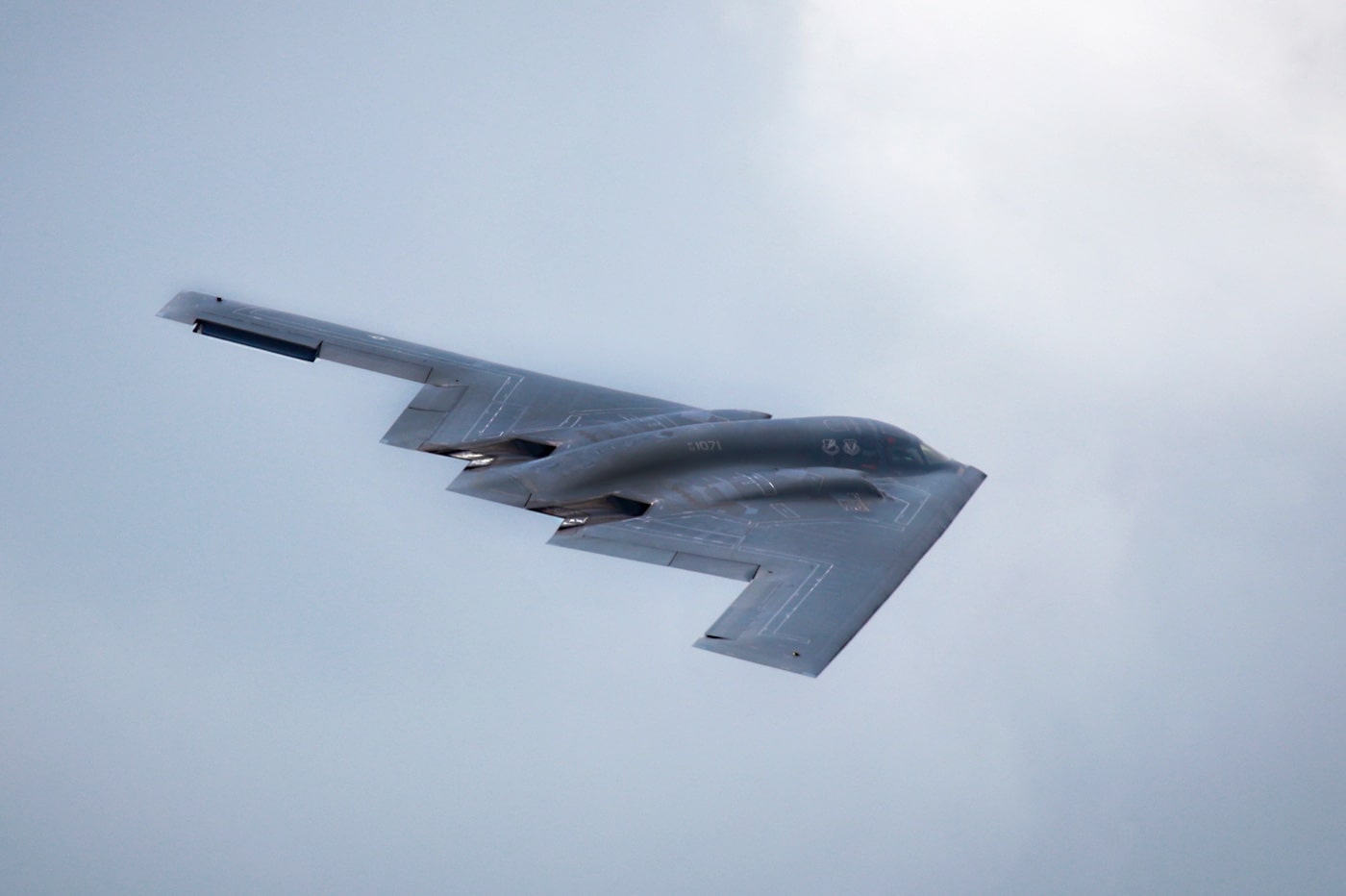
In support of Operation Enduring Freedom beginning in 2001 following the 9/11 attacks on the Pentagon and New York City’s World Trade Center, the B-2 flew some of its long missions to date — traveling from Whiteman to Afghanistan and back. That required the two-person crew to spend upwards of 20 hours in the cockpit.
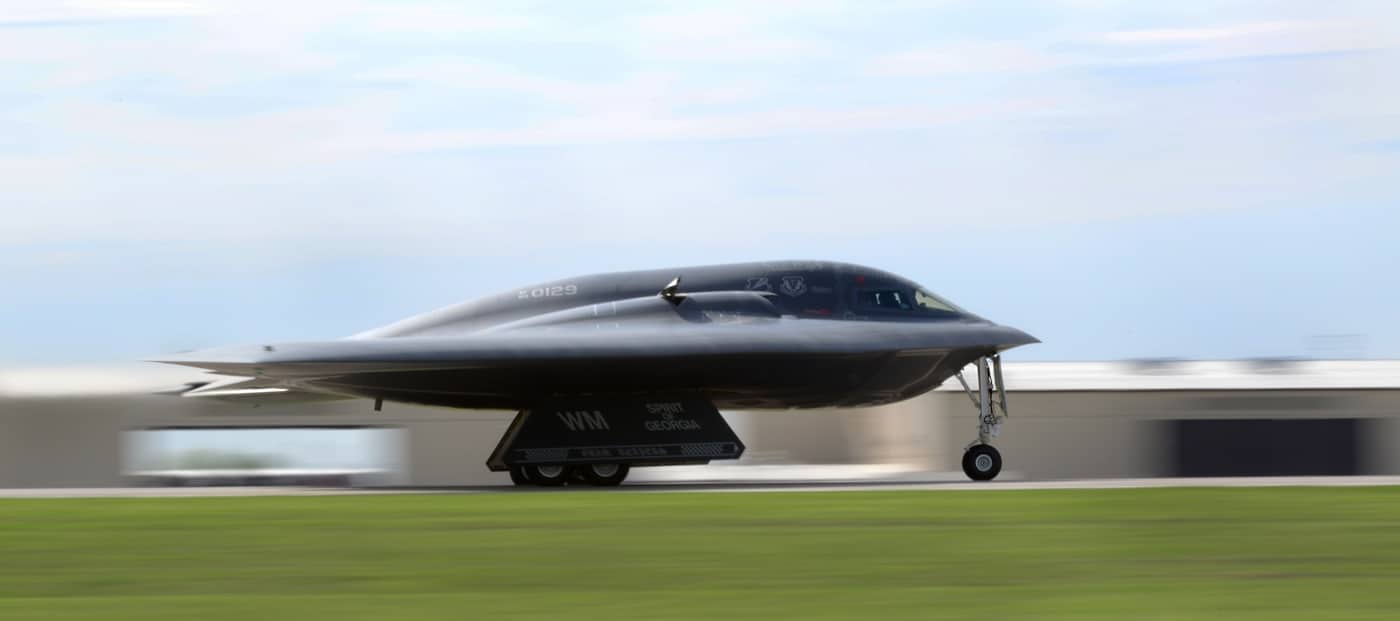
Beginning in 2003, some B-2s were stationed in the Middle East as part of the U.S. military buildup in the region, and as part of Operation Iraqi Freedom, B-2 Spirits flew 22 sorties from forward operation locations, while 27 sorties were still conducted from Whiteman. In total, the B-2s delivered more than 1.5 million pounds of munitions.
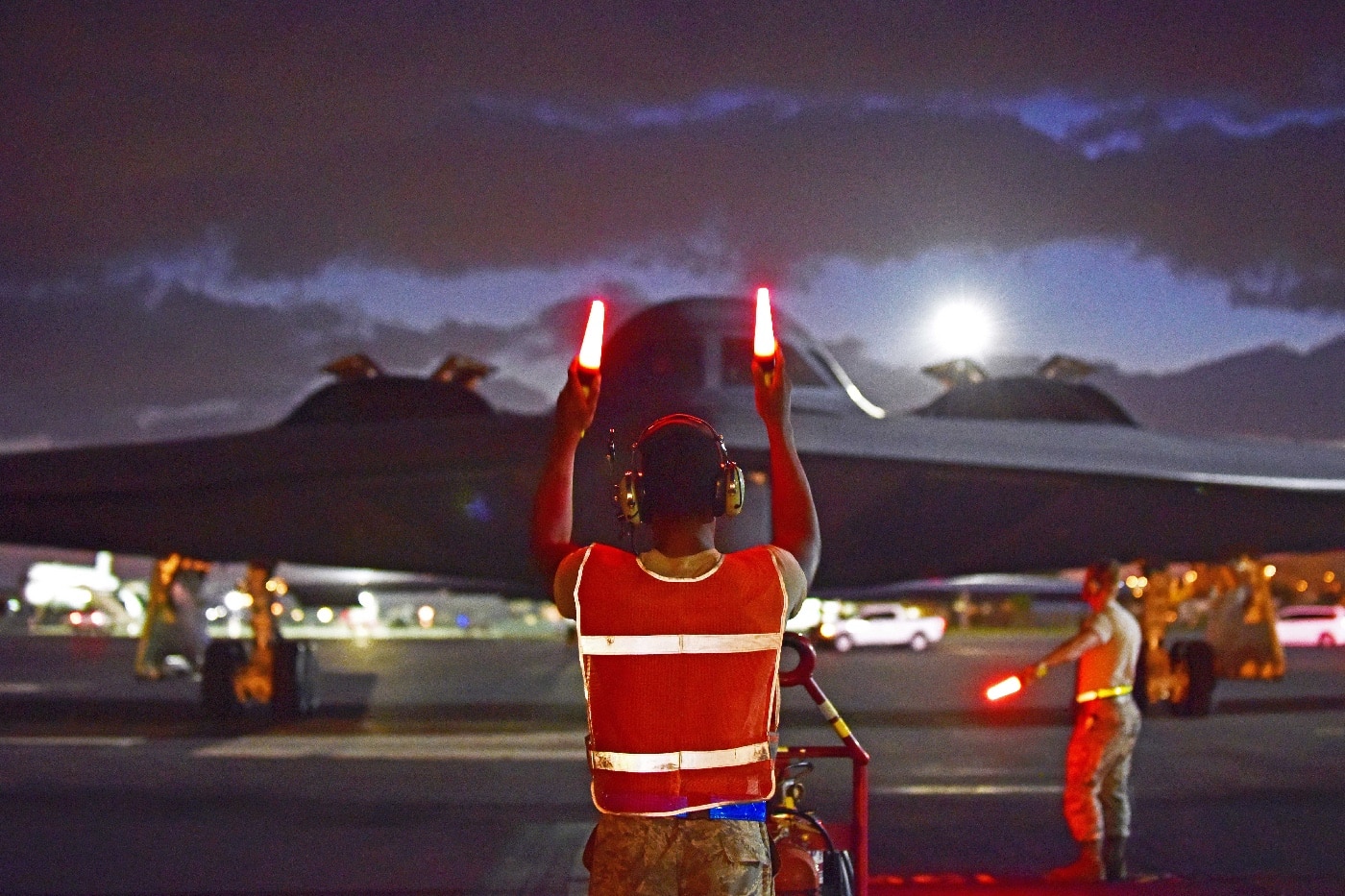
Three B-2s flew later missions on the first night of Operation Odyssey Dawn, attacking high-priority Libyan targets in March 2011.
Expensive Crash
As the B-2 Spirit is the most expensive aircraft ever built, it shouldn’t be a surprise that it is also the most expensive plane to ever crash. On February 23, 2008, the aircraft named “Spirit of Kansas” took off from Whiteman as part of a continuous bomber presence mission, when it became unwieldy. Despite the best efforts of the pilots, the plane’s wingtips touched the ground, and as a result, both pilots were forced to eject.
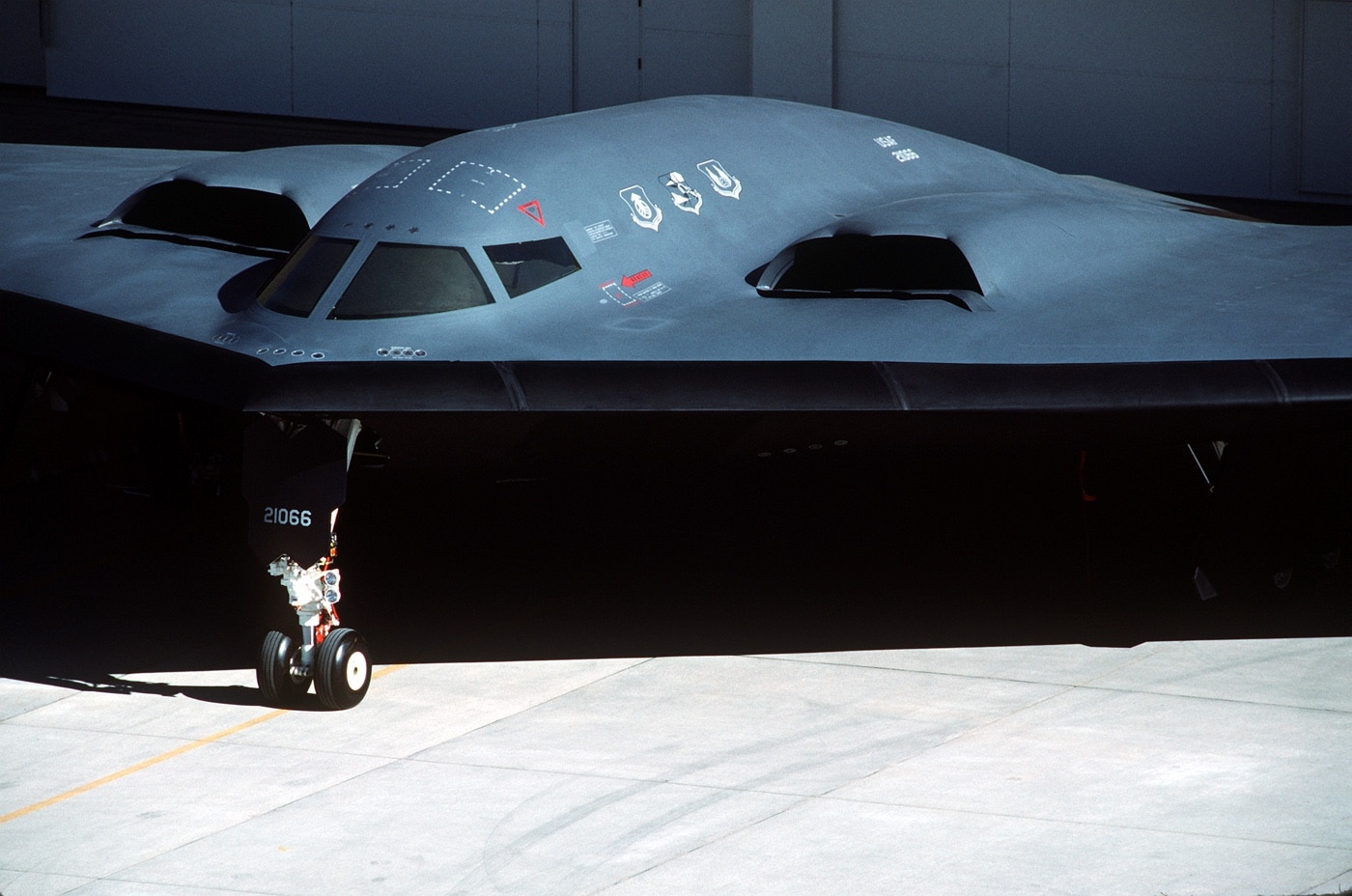
The entire fleet was grounded as the incident was investigated. It remains the only B-2 Spirit lost to date, but it cost the Air Force $1.4 billion.
Retirement Coming… Eventually
Last December, the U.S. Air Force, and Northrop Grumman officially unveiled another flying wing, the B-21 Raider — an aircraft that is now on track to enter service by the end of the decade. Current plans call for the Raider to replace the B-1 and B-2 bombers by the early 2030s, while it will operate alongside the B-52 fleet until that Cold War era warbird is finally retired by the late 2040s or early 2050s.
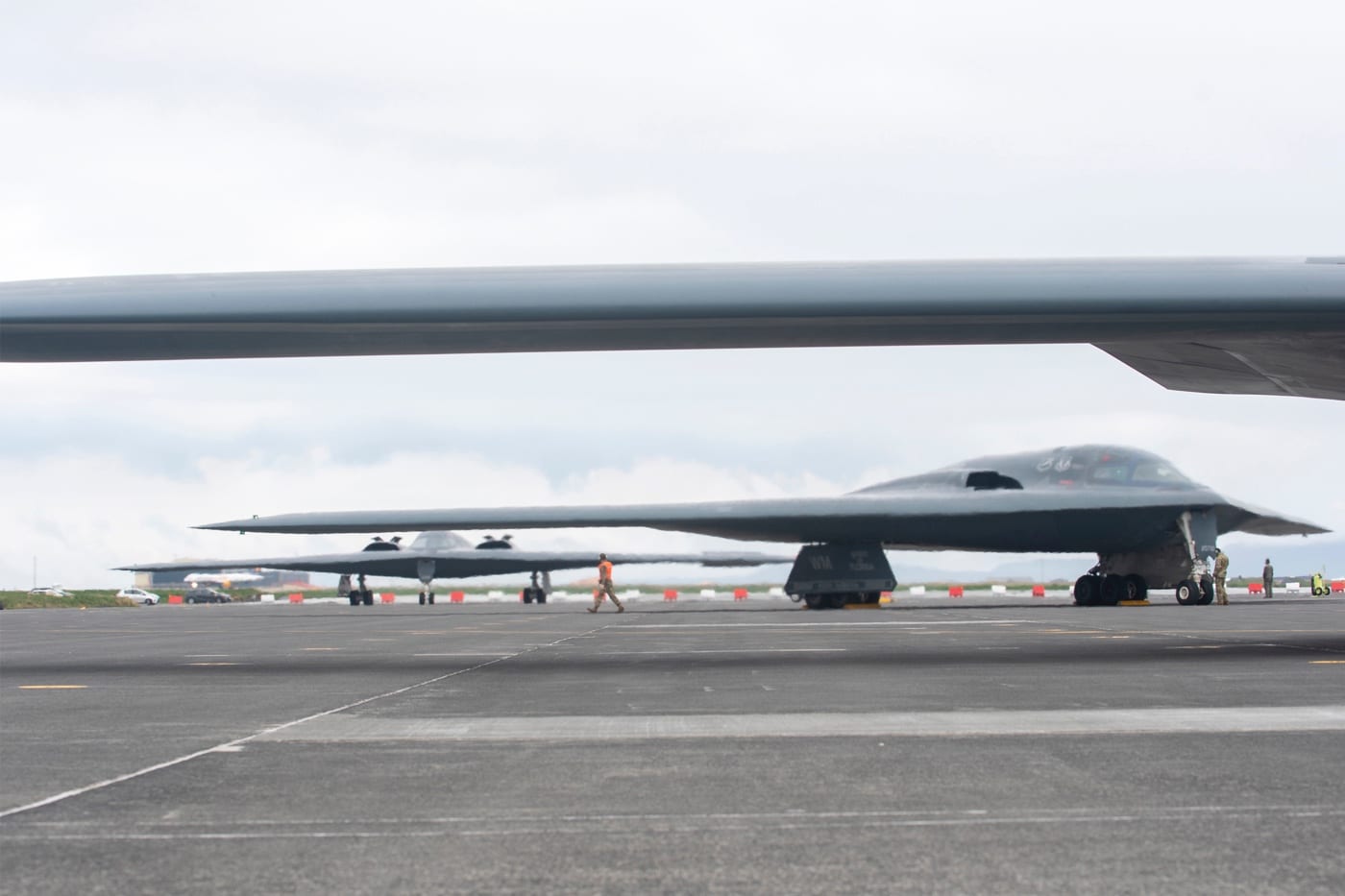
“It is difficult to pinpoint an exact retirement date for the B-2 Spirit, with factors such as the production timeline of the B-21 playing a part,” explained Harry Boneham, aerospace analyst at international analytics firm GlobalData.
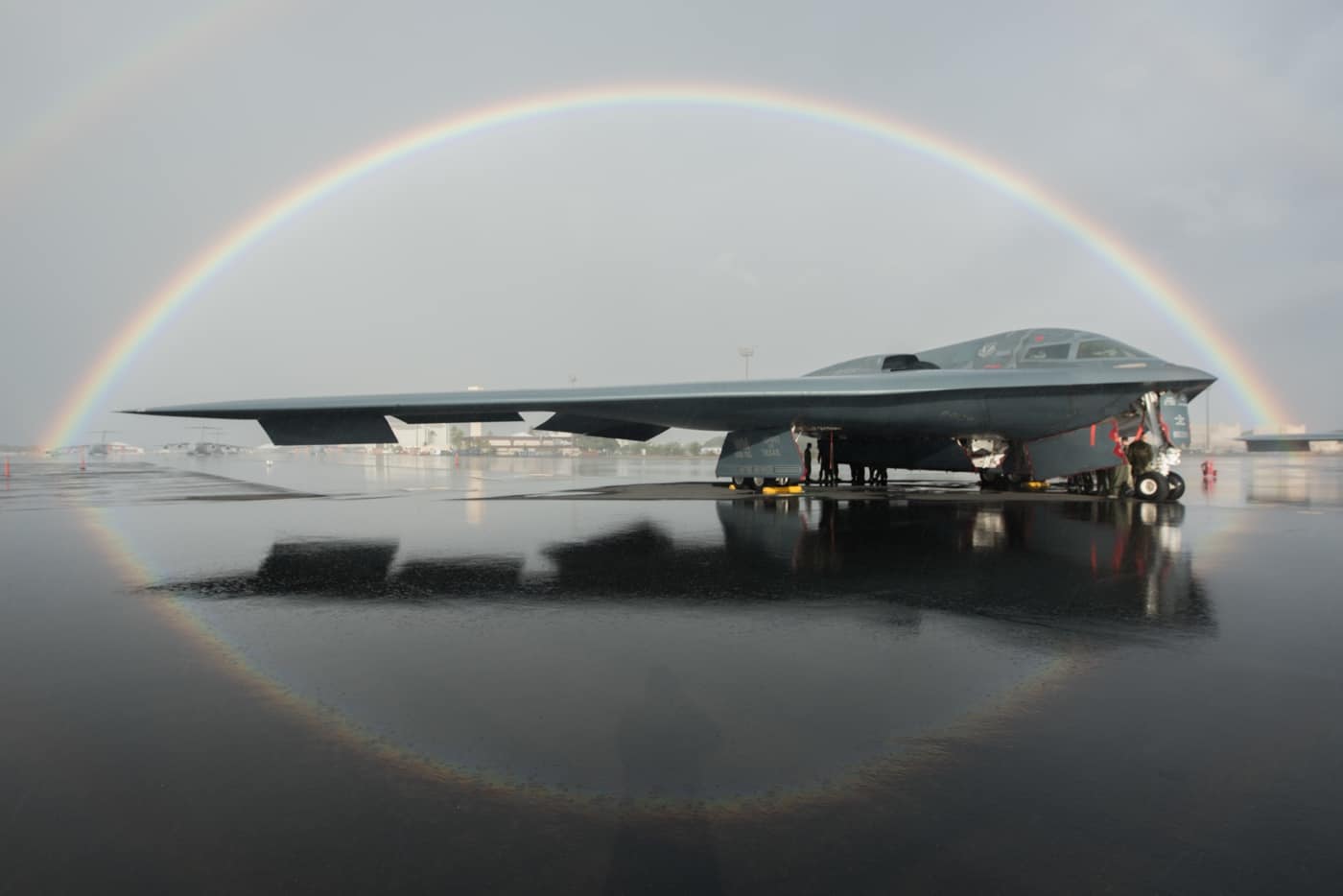
“The U.S. Department of Defense’s FY2024 budget proposal states that the B-21, which will replace the B-2 as the U.S.’s stealth strategic bomber platform, is expected to be delivered to operational bases from the mid-2020s,” said Boneham. “In addition, it is expected that the B-21 will assume the nuclear weapon delivery platform role within two years of this initial operating capability. With this in mind, it is likely that the B-2 will remain in service at least until the end of the decade as the B-21 comes into service. However, due to the criticality of the stealth strategic bombing capability, this service life could be extended further if there are delays in the production of the B-21. The B-2 will not be retired until the B-21 has been rolled out and has demonstrated that it is a reliable aircraft.”
Evolution of the B-2
There is no denying that the development of the B-2 has aided Northrop Grumman’s efforts to reduce the cost and even the development time of the B-21 Raider. However, the B-21 is still a significant leap forward in the evolutionary sense.
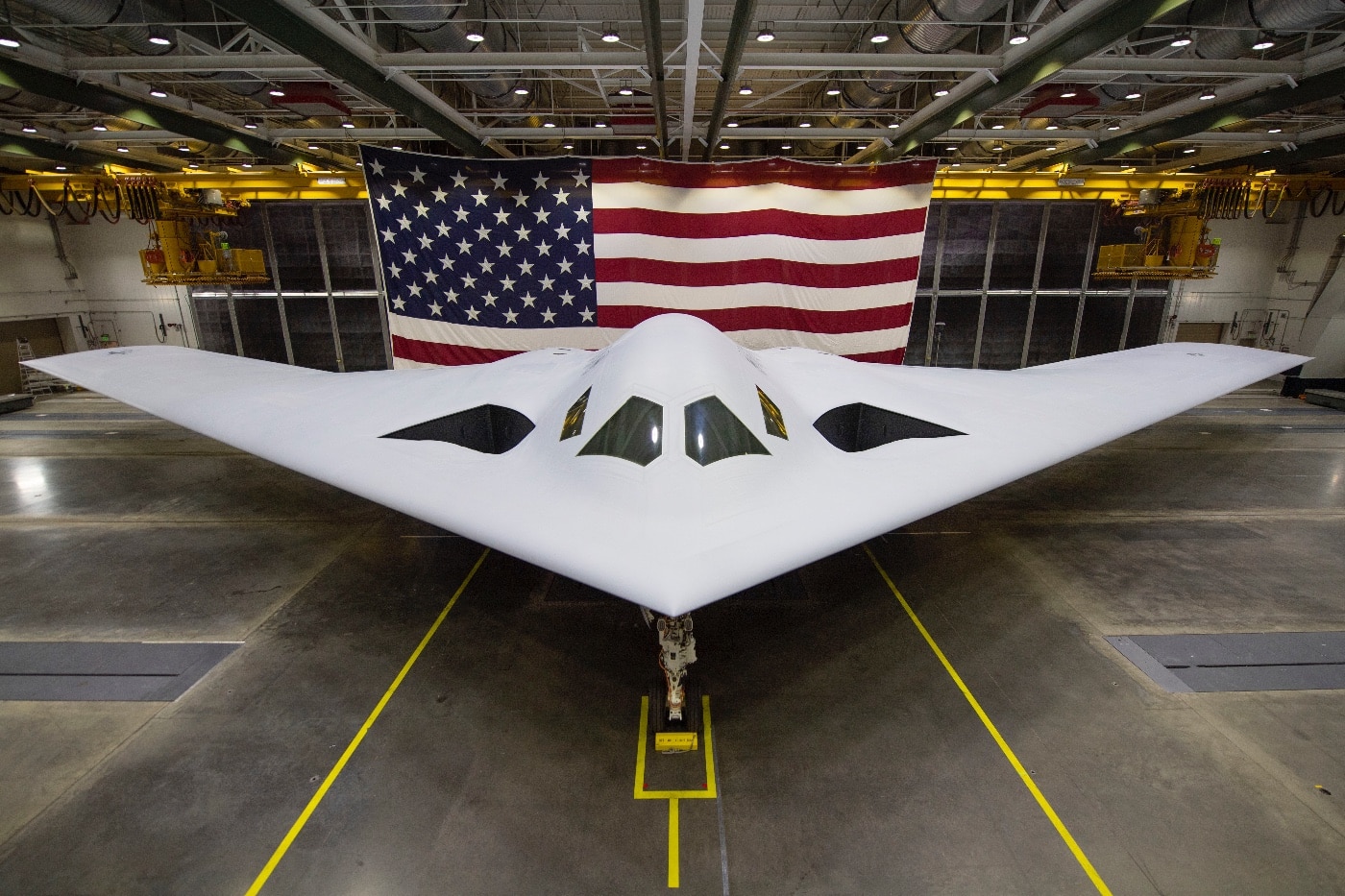
“The B-21 is much more than an improved version,” said Brad Curran, industry principal for aerospace, defense, and security at market research firm Frost & Sullivan. “It is a smaller and lighter aircraft, and its systems are more advanced. The B-21 will have a longer range, but it will also be stealthier. Its networking technology from satellites is vastly improved, while its computing power has been greatly advanced as well.
The B-21 also certainly has some B-2 DNA — including its unique stealth features such as its low-observability airframe design and utilization of radar-absorbent materials (RAMs).
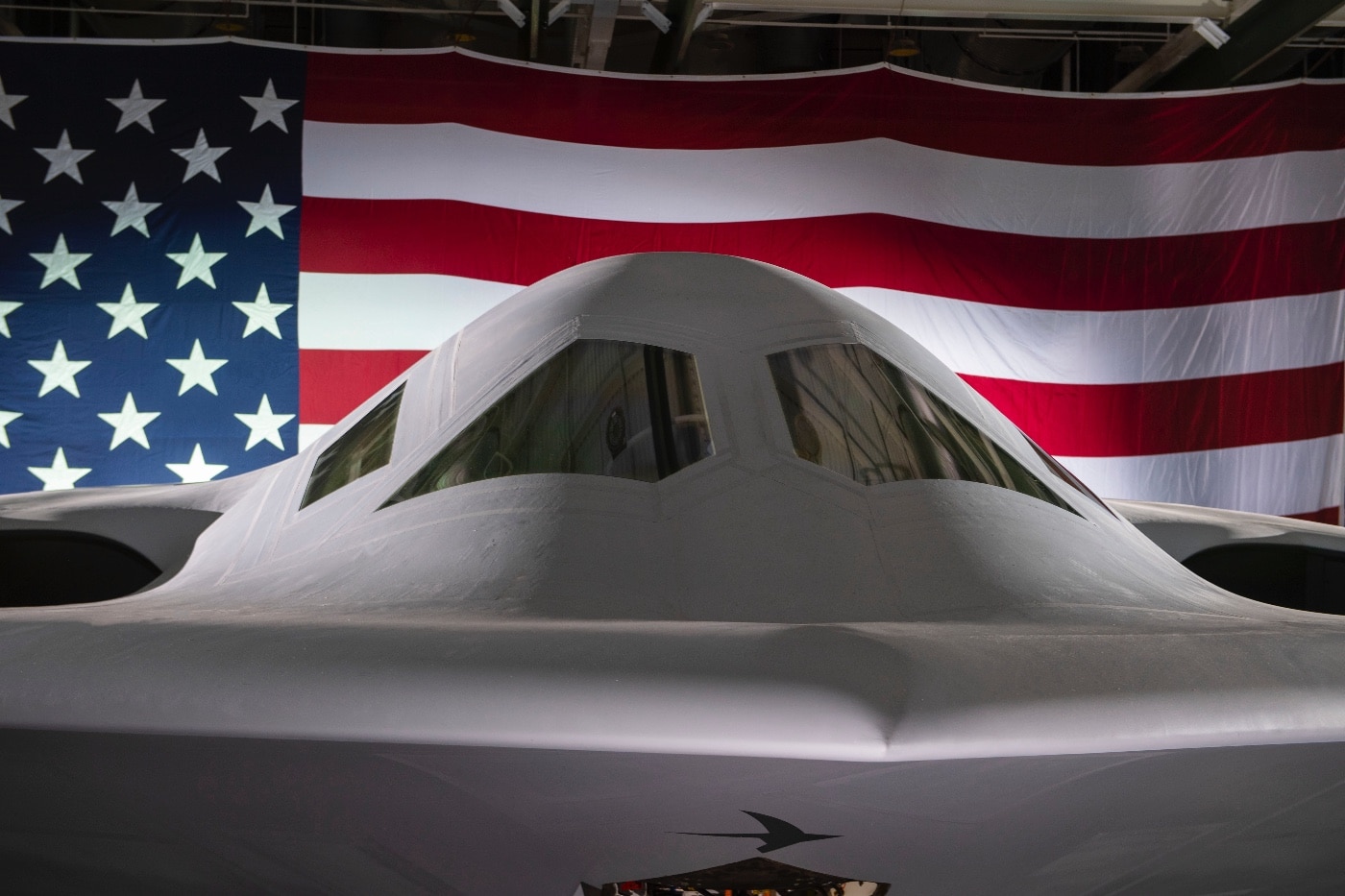
“However, the B-21 design builds upon the technologies and upon lessons learnt from the B-2 program to deliver a next-generation platform,” added Boneham. “For instance, in terms of technological advances, the B-21 utilized digital resources during the design phase to deliver an airframe with even lower radar observability, and advances to RAM technology, whilst no specifics have been given, are said to represent a steep change in terms of capability.”
There are other notable improvements as well.
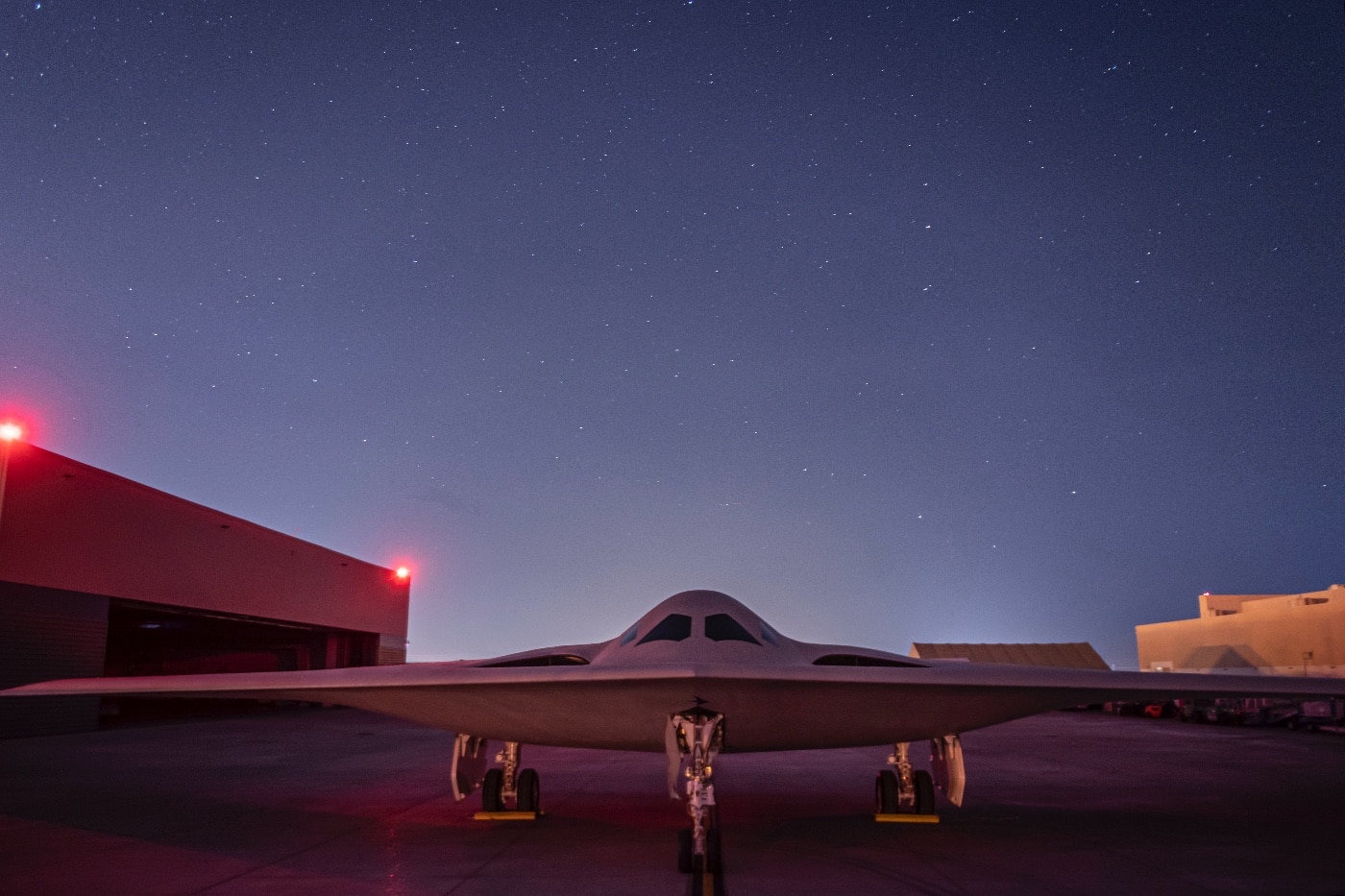
“At the very least, the removal of the requirement to store the B-21 in pressure and temperature-controlled enclosures as was the case with the B-2 will dramatically reduce maintenance costs,” noted Boneham. “Regarding lessons learned, whilst the airframe of the B-2 and B-21 are similar in that they both utilize a blended wing design, there are subtle but distinct differences. For instance, the B-21 does not incorporate the B-2’s saw-tooth trailing edge.”
That change could allow the B-21 to fly at higher altitudes more efficiently and could signal that there is greater confidence in the stealth technologies deployed in the B-2 and B-21.
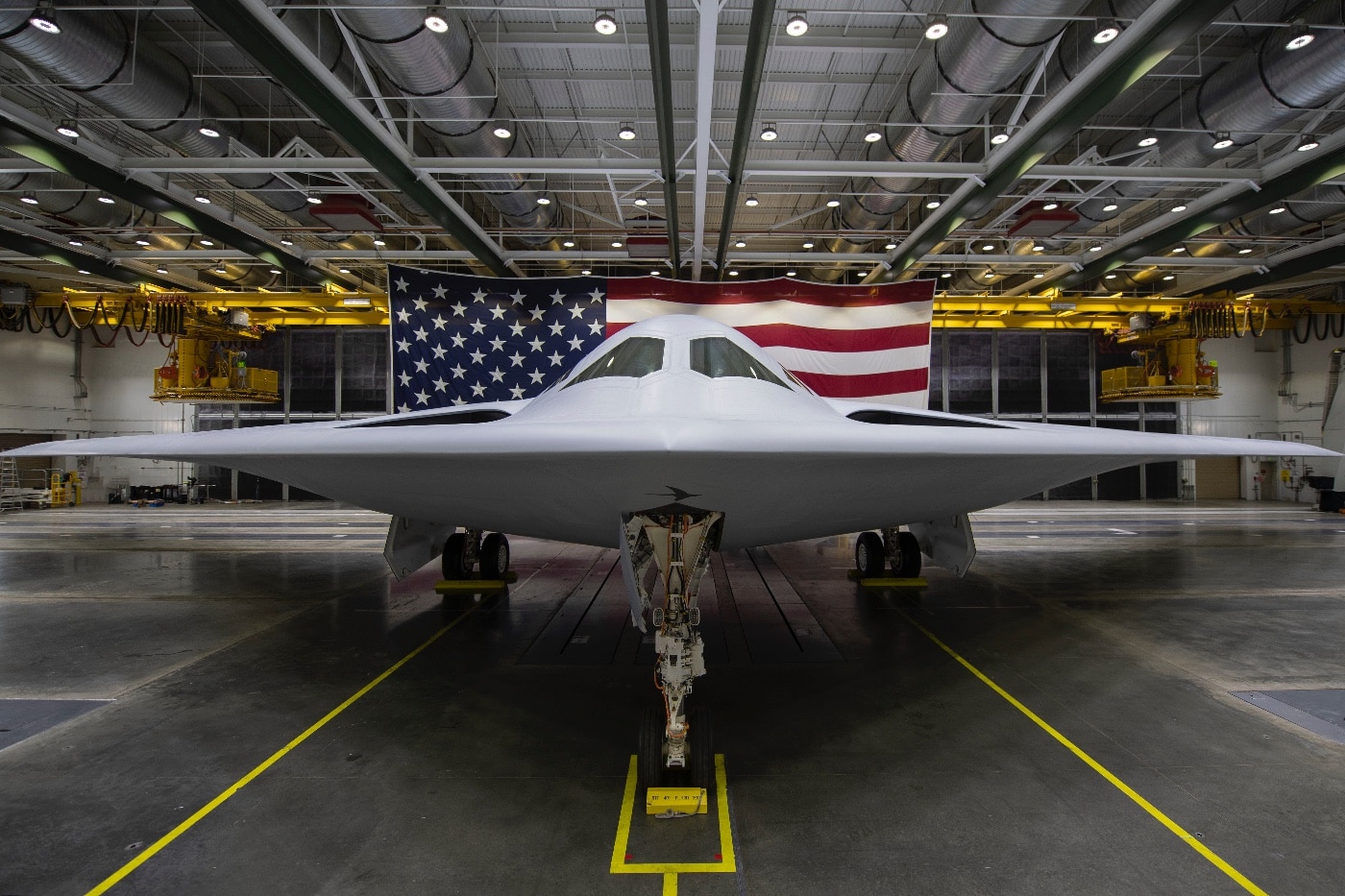
“The B-2’s saw-tooth design was added to enable the aircraft to fly at low altitudes as there was concern at the time that its stealth technologies would be insufficient to defeat adversary radars, and so missions would be forced to be flown at low altitudes to avoid detection,” said Boneham.
The B-2 proved not to be the last U.S. bomber, and that likely won’t be the case with the B-21 Raider either. Currently, only Russia, China, and the United States operate long-range strategic bombers, but as long as those near-peer adversaries maintain such aircraft, so too will the U.S. Air Force.
“It may be the last bomber, at least in the manned sense,” said Curran. “If there is another bomber it could be unmanned.”
But it might still look a bit like the B-2 or B-21. Development is now underway for drones to serve as “loyal wingman” for advanced stealth fighters, and those are utilizing the flying wing design. The B-2 Spirit was just the first successful bomber to make use of the concept, but it won’t be the last — and therefore its spirit will live on in future U.S. aircraft.
Editor’s Note: Please be sure to check out The Armory Life Forum, where you can comment about our daily articles, as well as just talk guns and gear. Click the “Go To Forum Thread” link below to jump in!
Join the Discussion
Continue Reading
Did you enjoy this article?

 91
91






